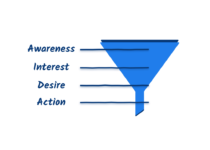Pinpointing Your Audience with ChatGPT: A Guide to Targeted Marketing
Identifying the right audience is a cornerstone of successful marketing, though it’s often easier said than done. This article explores how ChatGPT can assist in unraveling this challenge. We’ll provide practical examples demonstrating how ChatGPT can be used to identify target audiences for various brands and products, offering real-world applications and insights.
Finding Your Audience
Creating a prompt to find the target audience for a brand’s product or service involves several key elements that help in defining and understanding the potential customer base. Here are the crucial elements to include:
- Product or Service Description: Clearly describe the product or service offered by the brand. Include details about its features, benefits, and any unique selling propositions.
- Brand Values and Image: Outline the brand’s values, mission, and the image it wishes to project. This helps in aligning the target audience with the brand’s identity.
- Market Segment Consideration: Consider the various market segments that might be interested in the product or service. This includes demographic segments (age, gender, income level, education), geographic segments (location, urban/rural), psychographic segments (lifestyle, interests, values), and behavioral segments (purchasing behavior, brand loyalty).
- Competitor Analysis: Mention key competitors and their target audiences. Understanding the competition can provide insights into potential gaps in the market or areas for differentiation.
- Purpose of Identification: Specify why you are identifying the target audience. For instance, is it for marketing strategy, product development, personalized communication, or another purpose?
- Potential Challenges or Limitations: If there are any known challenges or limitations in reaching certain audiences, or specific audiences you want to exclude, include these details.
Example Prompt:
“I am seeking to identify the target audience for a new organic skincare line by a brand that values sustainability and natural ingredients. The product range includes cleansers, moisturizers, and serums designed for sensitive skin. We need to understand which market segments would be most interested in these products, considering factors like age, gender, lifestyle, and skincare concerns. Additionally, insights into how our competitors target their audiences and any potential challenges in reaching our audience are required. The aim is to inform our marketing strategy and product positioning.”
This prompt is structured to gather comprehensive information about potential customers, aligning with the brand’s values and product specifics, thus aiding in the effective identification of the target audience. Now, let’s put this into practice.
Expanding Our Exploration: Two More ChatGPT Examples
Having seen how ChatGPT can effectively identify a target audience in our first example, let’s broaden our perspective with two more scenarios. These examples will further illustrate ChatGPT’s versatility in audience analysis across different brand contexts and product categories.
Coca-Cola:
Prompt: “I need to determine the target audience for Coca-Cola, a globally recognized soft drink brand. The analysis should consider Coca-Cola’s brand image as a classic, universally appealing beverage with a long history of marketing focused on themes of happiness and sharing. It’s important to understand the demographic (age, gender, lifestyle) and psychographic (interests, values) profiles that align with the brand’s broad appeal. Additionally, consider how changing health trends might impact the audience profile. The goal is to inform marketing strategies and product positioning in diverse global markets.”
First-Person Shooter Video Game (Similar to Call of Duty):
Prompt: “I’m looking to identify the target audience for a first-person shooter video game akin to Call of Duty. This game features intense, fast-paced combat and is set in a modern warfare scenario. The audience analysis should focus on gamers’ demographic segments, particularly age range, gender, and geographic location. Additionally, insights into psychographic factors like gaming preferences, engagement with online multiplayer communities, and interest in military-themed games are needed. It’s also important to consider the impact of gaming platforms (PC, consoles) on the target audience. The objective is to guide targeted marketing campaigns and community engagement strategies.”
Each prompt is tailored to the specific product — Coca-Cola and a first-person shooter video game — with a focus on demographic and psychographic factors relevant to each product, guiding effective marketing and engagement strategies.
Concluding Insights: Harnessing ChatGPT in Audience Strategy
Through these three practical examples, we’ve seen the remarkable ability of ChatGPT to assist in identifying target audiences for a diverse range of brands and products. Each scenario showcased how nuanced prompts can lead to detailed and actionable audience insights, demonstrating ChatGPT’s adaptability and depth of understanding. This exploration underlines the potential of AI tools in refining our marketing strategies and making data-driven decisions. As we continue to navigate the evolving landscape of digital marketing, incorporating AI like ChatGPT can be a game-changer, offering a blend of efficiency, precision, and innovation. Remember, the key to success lies in crafting thoughtful prompts that capture the essence of your marketing challenge.


